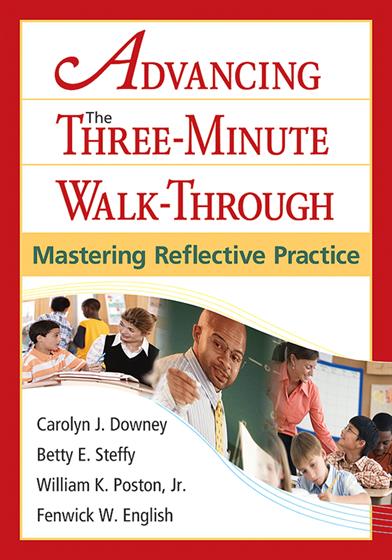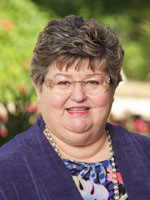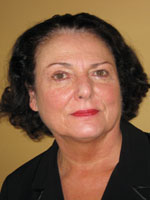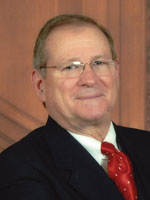About the Authors
Dedication
Preface
Considering the Ghosts in the Closet: Hegemony and Conflict Regarding Supervision and Evaluation in Schools
Examining the Classroom Walk-Through With Reflective Inquiry as a Discursive Practice
Understanding the Three Stages of Transformation With the Downey Approach
Examining the Text Analysis of the Three Transformational Stages
1. Building on the Philosophical Framework of the Three-Minute Walk-Through for Reflective Inquiry
Determining Your Values and Beliefs Regarding Human Behavior and Motivation and How These Influence Your Supervision Approach
Knowing How Your Beliefs Regarding the Human Nature of People Impacts Your Motivational Strategies
Using Various Types of Interactions Congruent With a Theory Y Philosophical Approach
Building Staff Capacity as a Way of Improving One's Practice
Posing Questions for Reflective Inquiry as the Way to Motivate Growth Rather Than Using Feedback
Being Reflective on Chapter Content
2. Considering the Various Approaches to Classroom Observations
Distinguishing Between Informal Walk-Throughs, Short Classroom Observations in Which Formal Data is Collected, and Principal-Supervisor Group Learning Walks
Identifying the Components Within the Classroom Observations to Determine Which Type of Observation to Use - Purpose, Primary Learner, Who Conducts the Observation, Observation Lens, Data Collected - if Such
Comparing the Various Approaches Using the Components
Clarifying the Meaning of "Walk-Through"
Being Reflective on Chapter Content
3. Clarifying the Misapplications in Using the Downey Walk-Through Five-Step Classroom Observation Structure
Clarifying the Five-Step Observation Structure Approach
Gathering Information on the Taught Objective: Content, Context, and Cognitive Type - Part I of Step Two
Analyzing the Curriculum Content - The First "C" of Step Two
Analyzing the Context of the Objective - The Second "C" of Step Two
Analyzing Cognition Type - The Third "C" of Step Two
Examining Congruence of the Teacher's Intended Objective With Actual Taught Objective - Part Two of Step Two
Calibrating the Taught Curriculum With the Expected Curriculum - Part Three of Step Two
Gathering Data on Instructional Practices - More on Step Three
Determingin When to and When Not to Interact With Others During the Observation
Being Reflective on Chapter Content
4. Creating a Culture of Reflection Through the Use of Walk-Throughs and Reflective Dialogue
Creating a Culture of Reflective Inquiry
Providing Opportunities for Reflective Dialogue
Using the Positive Presuppositional Phrases in the Downey Reflective Question
Expanding Teachers Outside Their Comfort Zone
Conducting a Reflective Dialogue to Lead to Collaborative Learning
Using the Reflective Conversation to Provide for Creativity and Challenging of the Status Quo
Being Reflective on Chapter Content
5. Moving People Toward Reflection
Providing a Foundation for Meaningful Reflective Practice
Promoting Reflective Thought and Transformative Learning
Moving Toward Interactive Conversations
Incorporating the Life Cycle Model
Using Direct Conversations: What the Principal Might Say
Using Indirect, Interdependent Invitation to Reflection
Using Collaborative-Interdependent Conversations
Being Reflective on Chapter Content
6. Adapting the Walk-Through and Reflective Conversation for Other Positions
Engaging in Reflective Inquiry With School Counselors
Engaging in Reflective Inquiry With Speech Language Pathologists
Engaging in Reflective Inquiry With School Nurses
Engaging in Reflective Inquiry With School Finance Officers
Engaging in Reflective Inquiry With Media Coordinators
Engaging in Reflective Inquiry With Chief Nutrition Directors
Thinking About All Positions for Reflective Inquiry
Being Reflective on Chapter Content
7. Adapting the Walk-Through and Reflective Conversation Approach for Peer Coaching and Mentoring
Valuing the Downey Model for Peer Coaching and Modeling
Listening to a Sample Dialogue Between Peers Using the Downey Approach
Implementing the Peer Walk-Through With Reflective Inquiry Approach
Using a Peer Protocol for the Walk-Through and Reflective Inquiry
Being Reflective on Chapter Content
8. Authenticating the Three-Minute Walk-Through and Reflective Inquiry and Practice With Recent and Legitimate Research
Providing Basic Foundational Research on Walk-Through Practices
Considering the Limitations of Using External Feedback
Valuing Supervisor Visibility and Instructional Improvement
Understanding the Power of Reflective Practice and Professional Growth
Considering Reflective Practice and Experience
Being Reflective on Chapter Content
9. Using the Walk-Through and Reflective Dialogue to Create Professional Learning Communities
Using the Downey Model of Reflective Practice in Professional Learning Communities
Understanding the Leadership Responsibilities and Requirements in the Professional Learning Community
Building Capacity for Professional Learning Communities to Develop Reflective Questions and Carry Out Reflective Conversations
Considering the Implications for School Leaders
Constructing a Learning Organization: A Summary
Being Reflective on Chapter Content
10. Institutionalizing the Three-Minute Walk-Through and Reflective Inquiry
Understanding the Prerequisites in Terms of Curriculum
Considering the Prerequisites in Terms of Culture
Considerations for Successful Full-Scale Implementation of the Model
Being Reflective on Chapter Content
References
Index






